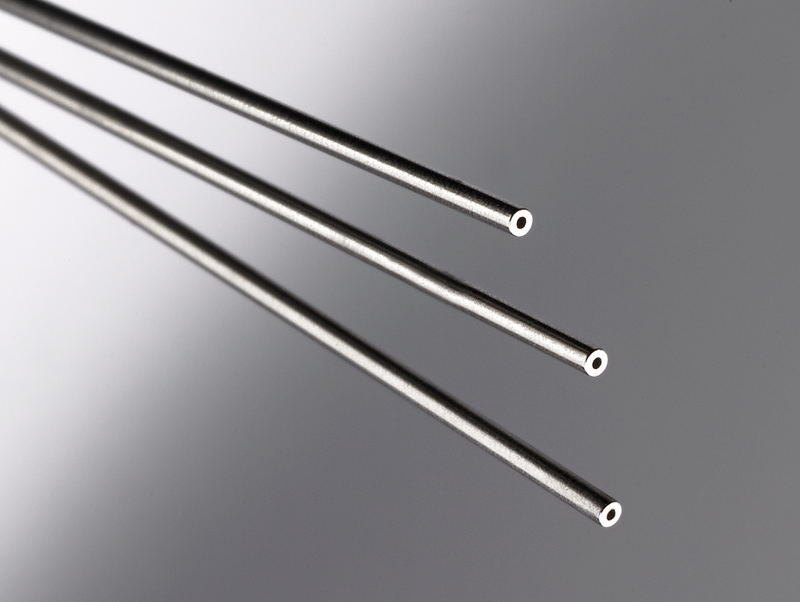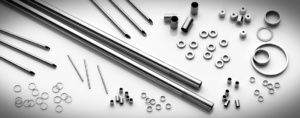Special Considerations for Precision Tube Cutting & High-Pressure Applications
Part 2 of this blog series on precision tube cutting and tubing in liquid dispensing systems mentions that the inside diameter (ID) of the tubing determines how evenly the liquid samples are dispensed. Imperfections in the ID surface finish can result in swirling, eddying, or buffeting — conditions that prevent the liquid from flowing out of the tube smoothly and, in turn, make it more difficult to get good test results.
However, swirling, eddying, or buffeting can also occur when the tubing in fluid dispensing systems must perform under high pressure, such as in chromatography testing systems. These are systems where components of a mixture are separated to prepare for another use or to measure the relative proportions of the different components.
Therefore, part 3 of the series takes a closer look at the implications of high-pressure applications that use precision tube cutting in fluid dispensing systems.
What to know about tubing used in high-pressure liquid dispensing systems
High-performance liquid chromatography (HPLC) is a powerful and versatile tool in analytical chemistry. It is a technology that provides the ability to separate, identify, and quantify the components present in any sample that can be dissolved in a liquid.
Today’s HPLC can detect trace concentrations as low as parts per trillion (ppt) and is widely used in pharmaceuticals, food processing, cosmetics, environmental sciences, forensics, the chemical industry, Defense and Homeland Security, and more.
There are three important considerations when choosing precision tubing to be used in a liquid dispensing system for HPLC, as well as other high-pressure applications:
1. Seamless vs. welded and redrawn tubing
In HPLC and other high-pressure fluid dispensing systems that utilize pumps rather than gravity, seamless tubing is highly preferred to tubing that is welded and redrawn. That is because any weakness at the weld line of the tubing can pose a risk of leaks, cracks, or even explosions when high pressure is applied.
2. The choice of tubing material
As chromatography has moved to higher bars of pressure (from 6,000 to 9,000 psi), it has also led to changes in the material used for the tubing. For example, a nickel-cobalt alloy such as Carpenter MP-35N™ allows for tubing that withstands higher pressure than stainless steel, but with the same wall thickness.
3. The impact of the tubing diameter
The rule of thumb is that the smaller the tubing ID, the better the accuracy of the fluid dispensing and the test results.
However, it is important to remember that as the ID decreases, the pressure created by the tubing can increase significantly. This in turn has the potential to create higher back pressure than the system can withstand.
How to choose a tubing material for HPLC and fluid dispensing systems
When deciding whether a particular tubing material can and should be used in HPLC or other fluid dispensing systems, there are additional factors to consider besides the tube’s ability to withstand pressure.
For example, the tubing material must be chemically compatible with both the sample and the testing system itself. Some biological samples will “stick” to the surface of stainless steel tubing, causing issues such as loss of sample, low yield, and carryover.
Thus, in this case a commonly used tubing material such as SS 316 — a molybdenum-alloyed stainless steel — might be replaced by titanium or any number of other metals that won’t have this problematic “sticking” issue.
And of course, it is critical to be sure the chosen tubing material can be cut, drawn, and finished to provide the right length and the smooth, burr-free ID, OD, and end cut you need.
For instance, plastic might seem to be a good, cost-effective option for the task. However, plastic tubing cannot be cut as exactly as metal can be — an important consideration where dispensing accuracy is vital. In addition, plastic may not withstand high pressure as well as metal tubing can.
(Learn more about plastic as a tubing option in 6 Reasons Why Your Plastic Medical Tubing Might Not Cut It.)
What to ask when evaluating a tubing material
When cutting metal tube and evaluating precision tubing for liquid dispensing systems, ask these questions:
- Will the material interact biologically or chemically with the sample? With other system parts?
- How short can the tubing be cut?
- Can the material be drawn to the size needed? Just how small can the tube ID and OD be?
- How smooth can the ID surface finish be made? Using what method?
- How hard is it to cut the tubing without it collapsing, chipping, or suffering other deformations?
- Is the end of the tubing burr-free?
- Is the tubing’s ID centered?
Your choice has an impact on test accuracy!
The choice of tubing material is a critically important step in getting the best results in chromatography and other testing that utilizes liquid dispensing systems.
Fortunately, the right metal tubing provider and its engineering team can help you decide on the cutting method, ID surface finishing, and other features that will meet your needs and be cost-effective for your particular application.
To explore different precision cutting options for your metal tubing or other metal part needs, please download our free guide, Choose with Confidence: Comparing 2-Axis Precision Cutting Methods.






